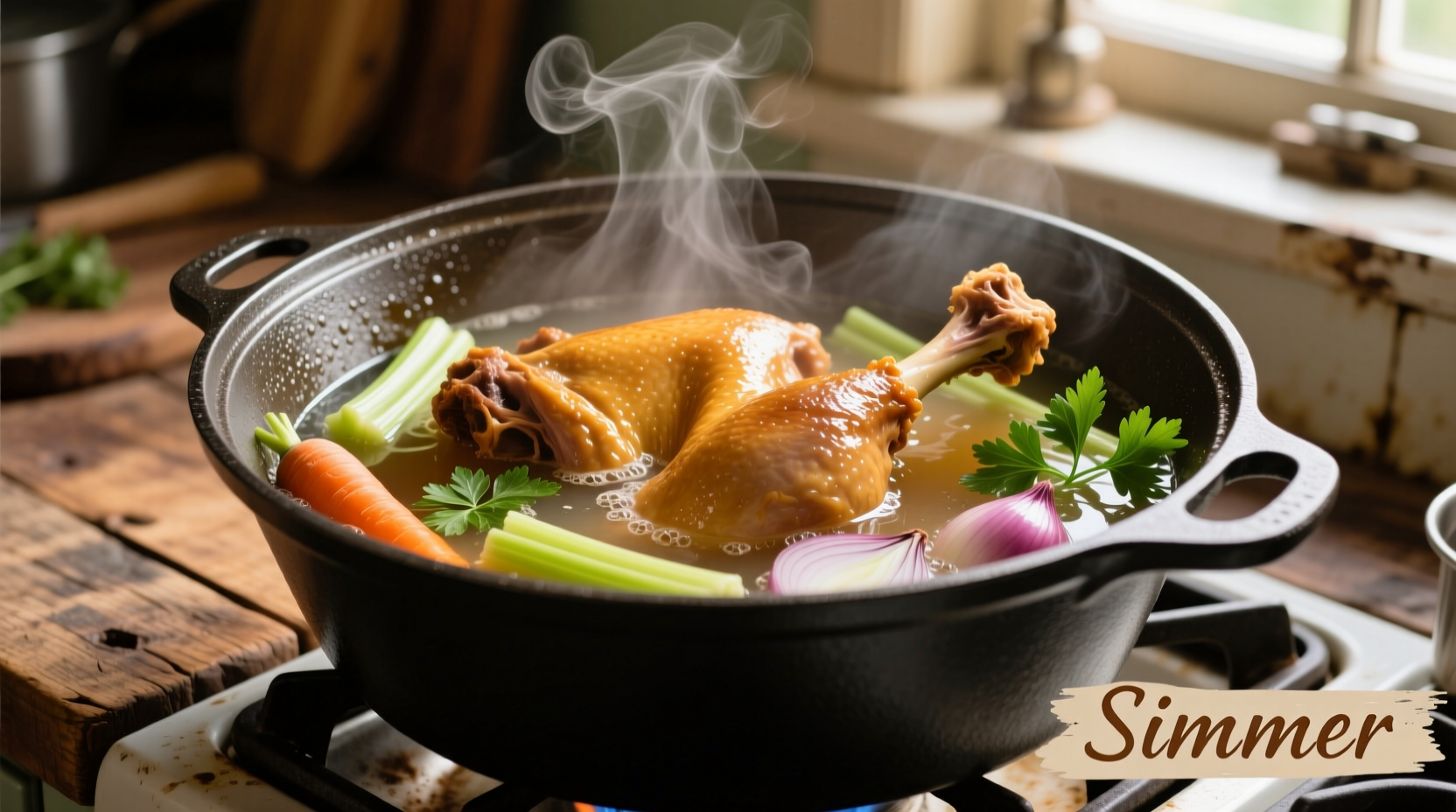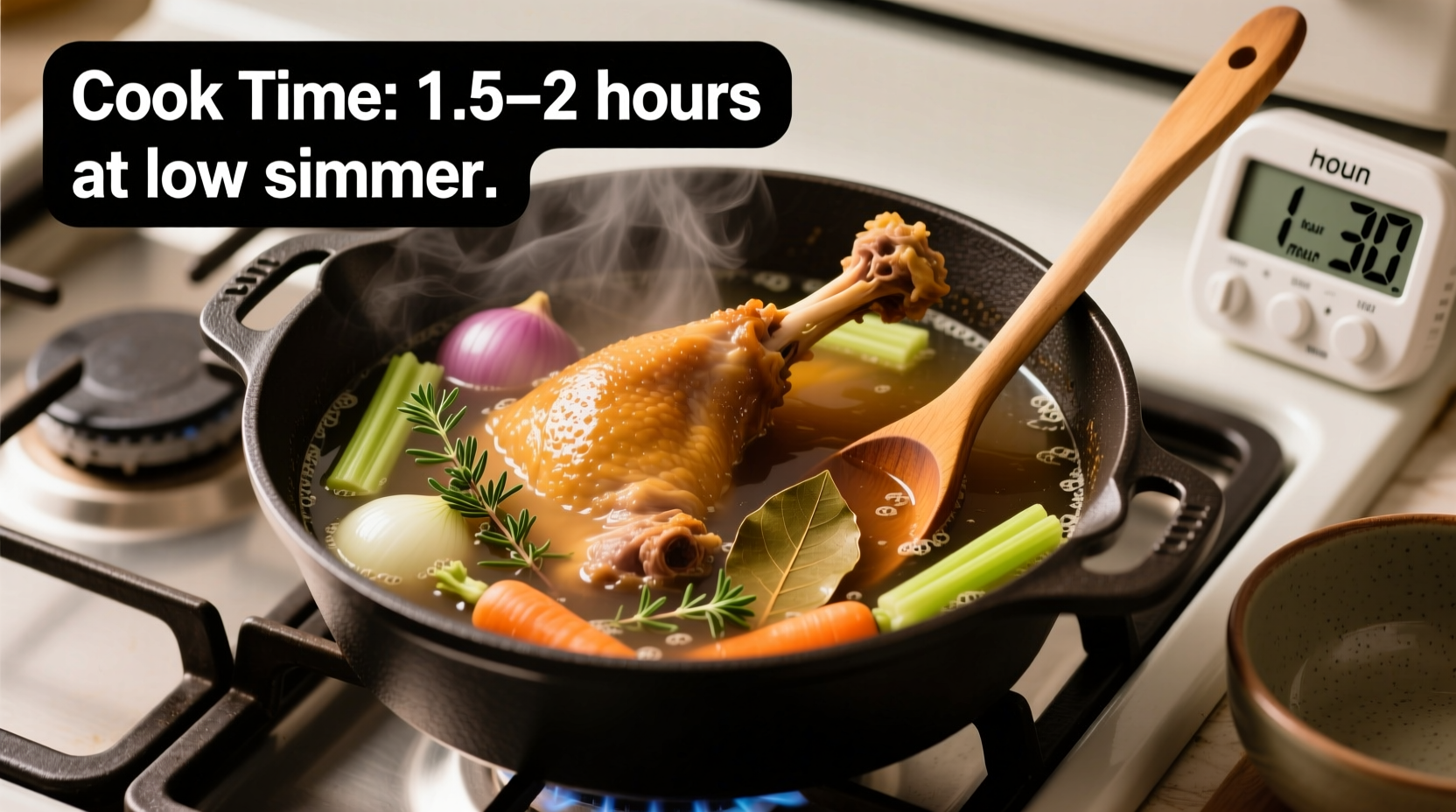When you're preparing turkey necks on the stove, getting the timing right makes all the difference between tough, chewy meat and fall-off-the-bone tenderness. As a chef who's taught thousands of home cooks proper poultry techniques, I've seen how crucial precise timing is for this often-overlooked cut. Unlike turkey breasts that cook quickly, necks contain more connective tissue that needs proper time to break down.
Why Stovetop Cooking Works Best for Turkey Necks
Turkey necks benefit from moist-heat cooking methods because their high collagen content transforms into gelatin when simmered slowly. The stovetop provides consistent, controllable heat that's ideal for this process. Unlike oven roasting which can dry out these small pieces, simmering in liquid ensures even cooking throughout while developing rich flavors.
| Cooking Method | Time Required | Texture Result | Best For |
|---|---|---|---|
| Stovetop Simmering | 1.5-2 hours | Fall-off-the-bone tender | Stews, soups, gravy bases |
| Pressure Cooking | 45-60 minutes | Very tender, slightly less flavor development | Quick meals |
| Oven Roasting | 2-2.5 hours | Firm but tender, crispy skin | Stand-alone dish |
Essential Preparation Before Cooking
Proper preparation sets the stage for perfect results. Start by rinsing turkey necks under cold water and patting them completely dry. This removes any bone fragments and helps with browning. For maximum flavor, season generously with salt, pepper, and aromatics like onions, garlic, and thyme at least 30 minutes before cooking.
Choose a heavy-bottomed pot with a tight-fitting lid—this maintains consistent temperature and prevents liquid evaporation. Add enough liquid (water, broth, or a combination) to cover the necks by about an inch. The USDA Food Safety and Inspection Service recommends maintaining a gentle simmer rather than a rolling boil for poultry to ensure even cooking without toughening the meat.

Step-by-Step Stovetop Cooking Process
Step 1: Initial Sear (Optional but Recommended)
Heat 1-2 tablespoons of oil in your pot over medium-high heat. Sear necks for 2-3 minutes per side until golden brown. This develops complex flavors through the Maillard reaction.
Step 2: Simmering Phase
Add your liquid and aromatics, bringing to a gentle simmer (not a boil). Immediately reduce heat to low, cover, and maintain a temperature where small bubbles occasionally break the surface.
Step 3: Timing Checkpoints
At 60 minutes: Check liquid level and add more if needed
At 90 minutes: Begin testing for tenderness with a fork
At 120 minutes: Verify internal temperature reaches 165°F
Step 4: Final Doneness Test
The meat should pull away easily from the bone with minimal resistance. If it resists, continue cooking in 15-minute increments, checking temperature each time. Remember that cooking continues slightly after removal from heat (carryover cooking).
Troubleshooting Common Issues
If liquid reduces too quickly: Lower the heat and add more broth or water as needed. A tight-fitting lid is crucial for maintaining proper liquid levels throughout cooking.
If meat isn't tender after 2 hours: This often happens with larger necks or if starting with frozen meat. Continue cooking in 15-minute increments until fork-tender, checking temperature regularly. Never reduce cooking time to compensate—undercooked poultry poses serious food safety risks.
For uneven cooking: Rotate necks in the pot halfway through cooking. Smaller pieces may cook faster, so position larger pieces toward the bottom where heat concentrates.
Serving and Storage Recommendations
Once properly cooked, turkey necks can be served as is with sides like mashed potatoes or incorporated into soups and stews. For the best texture, let them rest in the cooking liquid for 10-15 minutes before serving—this allows juices to redistribute.
Refrigerate leftovers within 2 hours of cooking. Store in airtight containers for up to 4 days. When reheating, bring to an internal temperature of 165°F to ensure food safety. For longer storage, freeze in portion-sized containers for up to 3 months.
Frequently Asked Questions
Can I cook frozen turkey necks directly on the stove?
Yes, but you'll need to increase cooking time by 30-50 minutes. Never cook frozen poultry at high heat as this creates a safety risk. Start with cold liquid and maintain a gentle simmer throughout cooking. Always verify internal temperature reaches 165°F before serving.
How do I know when turkey necks are fully cooked without a thermometer?
While a thermometer is essential for food safety, visual cues include meat that pulls away easily from the bone with minimal resistance. The connective tissue should be soft, and the meat should separate cleanly when pulled with two forks. However, USDA guidelines emphasize that visual cues alone aren't reliable for poultry safety—always use a thermometer to confirm 165°F internal temperature.
What's the difference between boiling and simmering turkey necks?
Boiling (rapid bubbling) makes turkey necks tough by causing proteins to contract violently, while simmering (gentle bubbles at 180-200°F) allows gradual breakdown of connective tissue. Simmering preserves tenderness and develops richer flavors. The USDA Food Safety and Inspection Service specifically recommends maintaining a gentle simmer rather than a rolling boil for optimal poultry results.
Can I overcook turkey necks on the stove?
Yes, overcooking beyond 2.5 hours can cause the meat to become dry and stringy despite the moist cooking method. While turkey necks are forgiving compared to breast meat, extremely prolonged cooking breaks down muscle fibers too much. For best results, check for doneness starting at 90 minutes and remove from heat as soon as they reach 165°F internal temperature and fork-tender consistency.
What liquid works best for cooking turkey necks?
Chicken or turkey broth adds the most flavor, but water works perfectly fine when enhanced with aromatics. For richer results, use a combination of half broth and half water. Avoid acidic liquids like tomato juice during the main cooking phase as they can toughen the meat—add acidic elements only during the last 30 minutes of cooking.











 浙公网安备
33010002000092号
浙公网安备
33010002000092号 浙B2-20120091-4
浙B2-20120091-4